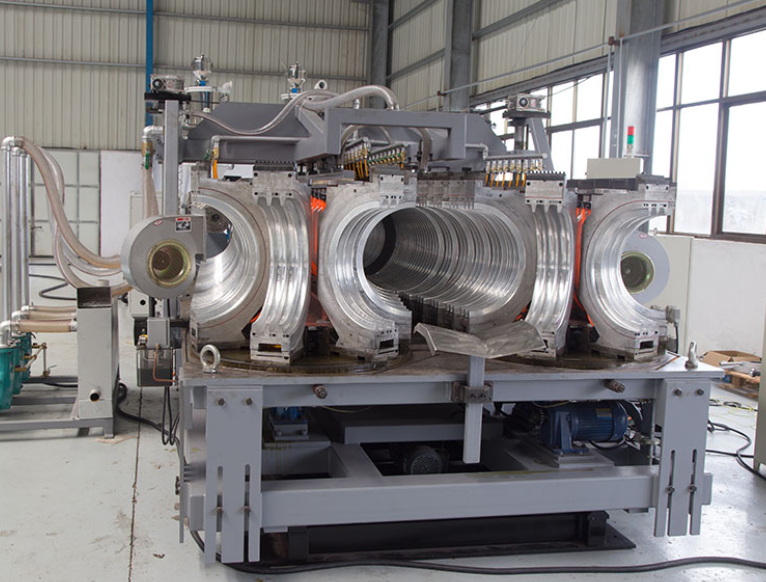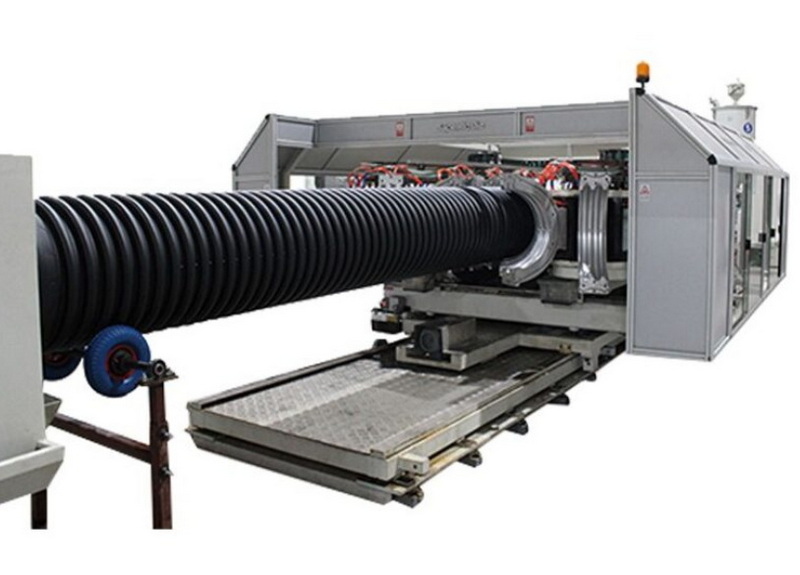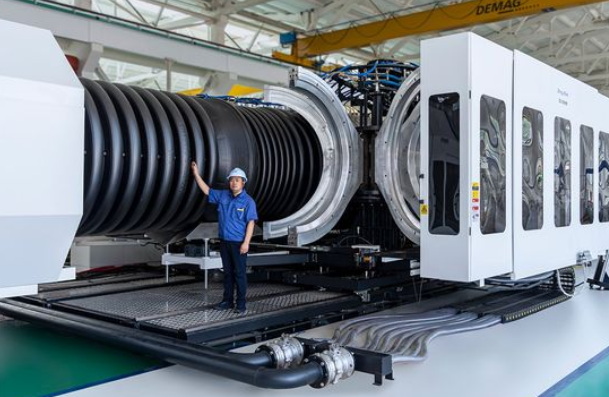Content Menu
● Understanding the Extrusion Process
● Factors Affecting Product Quality in Extrusion Manufacturing
>> Temperature Control
>> Pressure and Speed
>> Material Selection
● Best Practices for Enhancing Extrusion Quality
>> Regular Maintenance of Equipment
>> In-Process Monitoring
>> Quality Control Techniques
● The Impact of Extrusion Manufacturing Range on Different Industries
>> Plastics Industry
>> Metal Industry
>> Food Industry
● Conclusion
● Frequently Asked Questions (FAQ)
>> 1. What is the importance of temperature control in extrusion?
>> 2. How does pressure affect the extrusion process?
>> 3. What role does material selection play in product quality?
>> 4. How can manufacturers monitor extrusion parameters effectively?
>> 5. What are common defects observed in extruded products?
● Citations:
Extrusion manufacturing is a critical process in various industries, including plastics, metals, and food production. The quality of the final product is significantly influenced by the extrusion manufacturing range, which encompasses various parameters such as temperature, pressure, speed, and material selection. This article explores how these factors impact product quality and discusses best practices for optimizing the extrusion process.

Understanding the Extrusion Process
Extrusion is a manufacturing process where raw materials are pushed through a die to create objects with a fixed cross-sectional profile. The process can be applied to metals, plastics, and even food products. The key components of an extrusion system include:
- Extruder: The machine that houses a screw or ram to transport the raw material through the system while applying heat and pressure.
- Die: A specialized tool that shapes the material as it exits the extruder.
- Cooling System: A mechanism that solidifies the extruded material into its final form.
Factors Affecting Product Quality in Extrusion Manufacturing
Several critical factors within the extrusion manufacturing range can impact product quality:
Temperature Control
Temperature plays a vital role in determining the viscosity and flow characteristics of the material being extruded. Proper temperature control ensures that:
- The material melts uniformly.
- The viscosity remains consistent throughout the process.
- Thermal degradation is minimized.
For example, in plastic extrusion, maintaining a temperature within ±5°C is crucial for achieving optimal results. If the temperature fluctuates too much, it can lead to defects such as bubbles or inconsistent surface finishes[1][2].
Pressure and Speed
The relationship between pressure and speed during extrusion is essential for maintaining product quality. Key considerations include:
- Pressure: Insufficient pressure can result in incomplete filling of the die, leading to voids or dimensional inconsistencies. Conversely, excessive pressure can cause surface defects or flash.
- Speed: The speed at which material is extruded affects not only output rates but also dimensional accuracy. Real-time monitoring of these parameters helps maintain stability throughout production[1][2].
Material Selection
The choice of materials significantly influences the quality of extruded products. Factors to consider include:
- Purity and Composition: Raw materials should meet specific purity standards to ensure optimal mechanical properties.
- Material Properties: Characteristics such as thermal conductivity and melting point must align with application requirements[3][4].

Best Practices for Enhancing Extrusion Quality
To optimize product quality in extrusion manufacturing, manufacturers should adopt several best practices:
Regular Maintenance of Equipment
Maintaining extrusion equipment is crucial for consistent quality output. Regular checks on components like screws and dies prevent wear and misalignment that could lead to defects.
In-Process Monitoring
Implementing real-time monitoring systems allows manufacturers to track critical parameters such as temperature and pressure continuously. This proactive approach enables quick adjustments to maintain quality standards[1][2].
Quality Control Techniques
Quality control techniques such as visual inspections, dimensional checks, and material testing help ensure that products meet specified standards. Common tests include assessing tensile strength and surface finish[2][3].
The Impact of Extrusion Manufacturing Range on Different Industries
The implications of extrusion manufacturing range vary across industries:
Plastics Industry
In plastic extrusion, maintaining temperature control is vital for achieving smooth surface finishes and uniform dimensions. Variations in temperature can lead to defects like warping or surface blemishes.
Metal Industry
For metal extrusion processes, factors like die design and material properties are critical. High-quality aluminum extrusions require precise temperature management during both heating and cooling stages to achieve desired mechanical properties[3][4].
Food Industry
In food extrusion, maintaining consistent temperatures ensures uniform texture and flavor profiles in products like snacks or cereals. Any deviations can affect product safety and consumer satisfaction[5][6].
Conclusion
The extrusion manufacturing range has a profound impact on product quality across various industries. By understanding and managing key factors such as temperature control, pressure, speed, and material selection, manufacturers can enhance their production processes significantly.
Investing in regular maintenance, real-time monitoring systems, and robust quality control techniques will ensure that extruded products meet or exceed industry standards. As technology advances, further innovations in extrusion processes will likely continue to improve product quality and efficiency.

Frequently Asked Questions (FAQ)
1. What is the importance of temperature control in extrusion?
Temperature control is essential for ensuring uniform melting of materials, which directly affects viscosity and flow characteristics during the extrusion process.
2. How does pressure affect the extrusion process?
Insufficient pressure can lead to incomplete filling of dies resulting in voids; excessive pressure may cause surface defects or flash on products.
3. What role does material selection play in product quality?
Choosing high-quality raw materials with appropriate properties ensures that extruded products meet performance standards and application requirements.
4. How can manufacturers monitor extrusion parameters effectively?
Real-time monitoring systems can track critical parameters like temperature and pressure throughout the production process to maintain stability.
5. What are common defects observed in extruded products?
Common defects include warping, surface blemishes, voids due to incomplete filling, and inconsistencies in dimensions caused by fluctuations in processing conditions.
Citations:
[1] https://plasticextrusiontech.net/from-equipment-to-processing-factors-that-make-or-break-plastic-extrusion-quality/
[2] https://www.la-plastic.com/post/what-is-the-quality-control-of-extrusion-process
[3] https://www.odmetals.com/blog/5-factors-that-affect-the-quality-of-custom-aluminum-extrusions
[4] https://www.youtube.com/watch?v=iiGlq7408ME
[5] https://www.youtube.com/watch?v=Tp2Rdx69SSo
[6] https://www.twi-global.com/technical-knowledge/faqs/plastic-extrusion
[7] https://www.tfgusa.com/understanding-extrusion-a-fundamental-manufacturing-process/
[8] https://www.sfrindustries.com/faqs.phtml
[9] https://www.fitzpatrick-mpt.com/news-and-events/how-to-mill-hot-melt-extrusion-without-destroying-product-quality
[10] https://starext.com/news/aluminum-extrusion-finishing-fabrication-frequently-asked-questions-faq
[11] https://resmart.com/news/post/best-practices-for-designing-high-quality-extruded-parts.html
[12] https://www.ijmerr.com/v3n3/ijmerr_v3n3_25.pdf
[13] https://www.kellerplastics.com/quality-assurance-in-plastic-extrusion-certifications-and-standards/
[14] https://www.researchgate.net/figure/Extrusion-process-Process-parameters-that-determine-the-quality-of-the-tube-1-4-zone_fig3_324132141
[15] https://www.tfgusa.com/understanding-extrusion-a-fundamental-manufacturing-process/
[16] https://www.tensilemillcnc.com/blog/the-most-efficient-aluminum-extrusion-process-with-precise-quality-control-will-guarantee-the-best-results-of-your-production






















